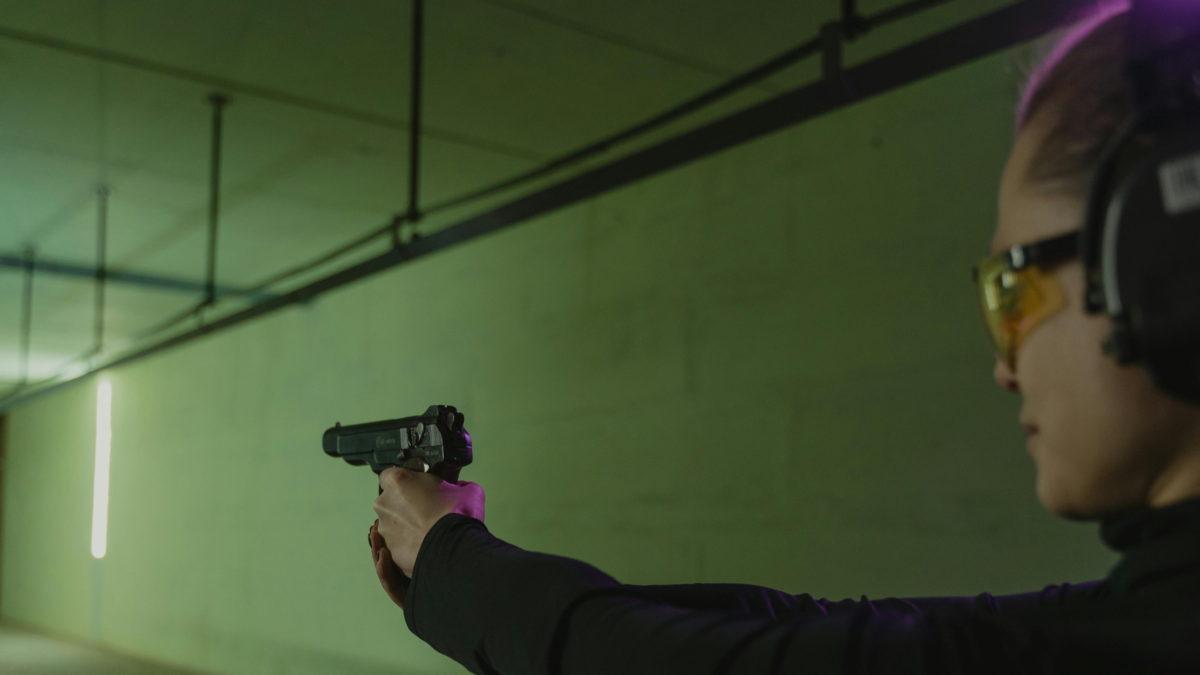Introduction:
Trigger Control Secrets are not just for elite athletes. They are the difference between a clean bullseye and a frustrating miss. I have seen this again and again as a coach at RP Shooting Centre. A young shooter with a steady stance and perfect breathing still misses because their finger moves just a little too fast or too hard. It is like pushing a door gently versus slamming it – small changes create big results.
In this guide, we will keep it simple. We will use science, easy drills, and real examples to make trigger control feel natural. Whether you are preparing for your first pistol shooting competition or trying to improve your practice scores, these steps will help.
Trigger Control Secrets: The Science Behind a Perfect Shot
Think of the trigger as a handshake with your pistol. Too soft, and it feels weak. Too hard, and it shakes. Science explains why:
1. Biomechanics of Finger Placement
Your trigger finger has tendons connected to your hand and wrist. When you pull sideways or with the wrong part of your finger, those tendons twist your grip. Even a one-degree shift can send your bullet wide. Use the pad of your finger, not the joint, so the pull stays straight back.
2. Neurology: Brain and Finger Connection
Your brain sends tiny signals to your muscles. When you are nervous or rushing, those signals spike. That’s why jerks or slaps happen. Slow, even pressure tells your brain to stay calm. Professional shooters practice slow-fire drills to retrain their reflexes.
3. Physics of the Trigger Pull
A trigger is a lever. Its weight and travel matter. A sudden pull adds torque to the barrel. Smooth pressure keeps the muzzle stable. It is the same reason archers release arrows gently – they do not want to disturb the aim.
Common Mistakes and How to Fix Them
Even experienced shooters slip up. Here’s what I see most often:
- Jerking or Slapping the Trigger – This is like yanking a fishing line. Your sights jump. Fix it by practicing “surprise breaks”—pull slowly until the shot surprises you.
- Over – Tightening – Squeezing your whole hand as you pull. Relax your other fingers.
- Anticipating Recoil – Flinching before the shot. Use the mixed loading drill: load a mix of live and dummy rounds. When the dummy clicks, you will see your flinch.
At RP Shooting Centre, coaches catch these habits fast. Sometimes we record your trigger pull in slow motion. Seeing your own mistake is the fastest teacher.
Perfecting Your Technique: Step-by-Step Guide
When I first trained a student for a 10m air pistol event, she struggled with jerks. We started with a wall drill:
- Finger Placement – Touch the trigger with the pad, not the tip or joint.
- Rearward Press – Pull straight back. Imagine sliding a drawer instead of pulling a stubborn nail.
- Follow-Through – Keep pressure after the shot. Do not let your finger fly off.
- Drills – Wall drills build muscle memory. The mixed loading drill fixes flinches. Slow-fire practice builds patience before you move to rapid-fire.
Log your results. Use a notebook or an app to record your groupings. Small, steady improvements matter more than big jumps.
Advanced Tips from Competitive Shooters
I once asked a national-level shooter how he keeps calm under pressure. He said, “I imagine the trigger as a soap bubble. Touch it gently or it pops.” Visualization works. Before a match, close your eyes and picture your perfect pull.
Other pros count a steady rhythm in their heads. One…two…press. It slows down nerves. Watching champions at international events shows how controlled their movements are, even with a timer ticking.
Choosing the Right Trigger for Your Pistol
Not all triggers feel the same. Single-stage triggers break cleanly with one pull. Two-stage triggers have a light take-up before the break. Adjustable triggers let you change weight or travel. Choose what matches your discipline and comfort. If you are unsure, try different pistols at RP Shooting Centre under a coach’s supervision. A trigger that fits your hand and style makes control easier.
Join RP Shooting Centre: Learn from Experts, Sharpen Your Skills
At RP Shooting Centre, we focus on precision and safety. Our experienced coaches teach these secrets every day. Whether you are aiming for your first bullseye or preparing for a championship, you will find guidance, world-class facilities, and a supportive community here. We also run workshops for advanced drills and mental training.
Joining is not just about access to a range. It is about learning with people who understand the sport deeply. Our guide for new shooters explains how to begin your journey. And if you already compete, training alongside top shooters will push you further.
Training Smarter, Not Harder
You do not need to fire 500 rounds every day. Mix live-fire practice with dry-fire drills at home. Add mental rehearsal – close your eyes and feel the perfect trigger press. Set a weekly routine: two dry-fire days, one live-fire session, and one day for reviewing your targets. Analyzing target sheets tells you what is working.
Safety Always Comes First
Never practice trigger work with a loaded pistol at home. Use dummy rounds or ensure your gun is empty. Keep the muzzle pointed in a safe direction. Review range safety rules before every session. Responsible practice keeps everyone safe.
Conclusion:
The science of Trigger Control Secrets proves that tiny changes create perfect shots. A steady, smooth press keeps your sights true and your score high. Practice the drills, learn from your mistakes, and work with experienced shooters who can guide you. Visit RP Shooting Centre to refine your technique and build confidence.
And remember: the trigger is not just a part of the pistol – it is your handshake with the target. Treat it with care, and the bullseye will follow.



